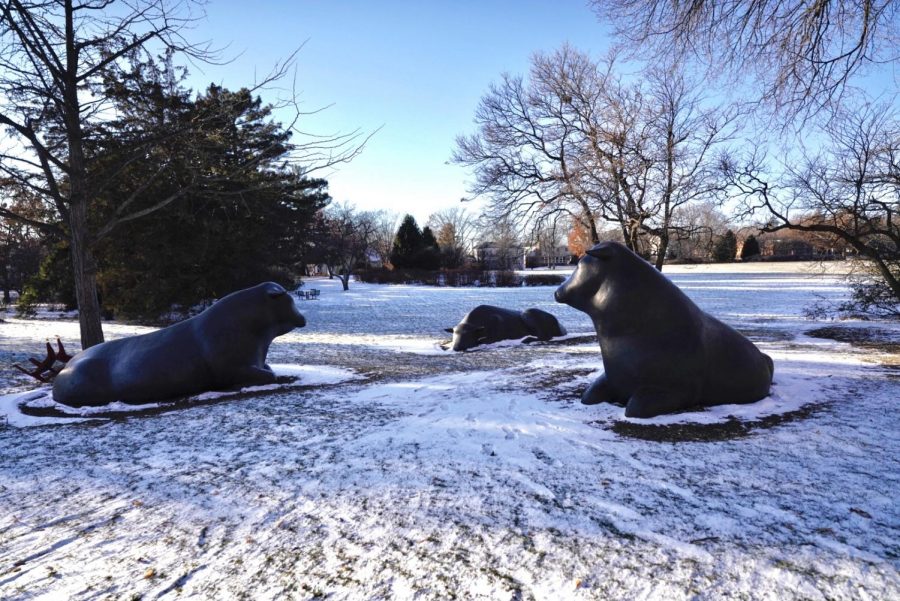The three giant cast-bronze bulls that lounge on the St. Paul’s campus lawn constitute the area’s artistic centerpiece.
The untitled sculpture piece was originally installed in 2001 by Peter Woytuk, ranging from 10 to 13 feet long, and has come to define the University’s St. Paul campus, representing the agricultural legacy of the neighborhood.
Woytuk first conceived the idea while visiting the Minnesota State Fair, located adjacent to the St. Paul campus, according to the Weisman Art Museum’s public art website.
Amazed by the large size of the bovine creatures, Woytuk realized the similarities between the bulls’ muscled backs and rolling hills landscapes while working at his studio in northwestern Connecticut. From there, the vision took shape and the statues were sculpted.
Craig Amundsen, the Weisman’s public art curator, says the sculptures are some of the most popular in the collection but they have especially struck a chord with one demographic: “The younger children love them almost too much,” Amundsen said.
Little kids from the University’s nearby Community Child Care Center often climb all over the statues, resulting in a need for color restoration every two to three years, according to Amundsen.
“I was there one day and a whole passel of kids came out from across the street. The kids were climbing all over the bulls and I was talking to their teacher and she said we have ‘bull time’ every single day,” Amundsen said.
Before preschool kids laid their claim, mischievous college kids caused the most bull commotion. In the middle of the night, groups of students would move the bulls around campus and they would be found in various places every morning.
“They probably weigh 300 pounds each but if you get six strong people,” Amundsen said.
The bulls are now anchored to the ground and they have been for years, according to a 2007 Minnesota Daily article’s mention of them.
Woytuk was unable to be reached for comment, but he appears to still be active on Instagram and on the animal sculpture scene. One website lists a Woytuk sculpture of two geese goes for nearly $10,000.
The decision to leave the sculpture untitled may mean that Woytuk did not see a reason to name the bulls; titles generally provide insight into an artist’s vision and help make the art more accessible.
However, it appears that the bulls are already accessible enough to the campus community sans the title: in their 20-plus years they have been embraced as a testament to nature, the St. Paul campus’ agricultural legacy and a play-thing for all ages.
Correction: A previous version of this story misstated the material the bulls are cast in. The bulls are cast-bronze.














